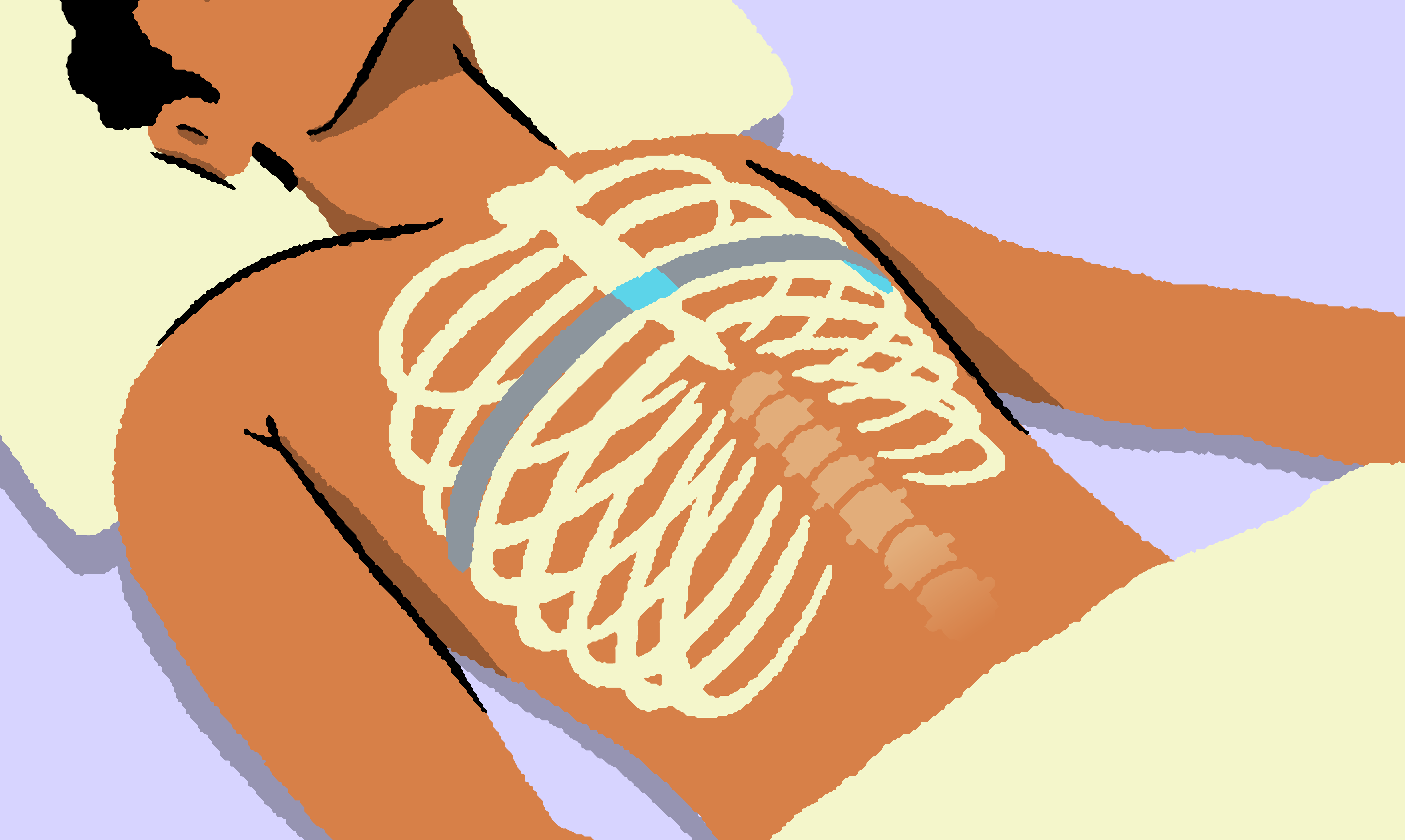
The procedure will take place in a hospital under anesthesia.
What Is the Nuss Procedure?
What Is the Nuss Procedure?
The Nuss procedure is the most common method of chest wall repair for pectus excavatum. It is a minimally invasive procedure. This means that very small incisions are made on either side of your chest.
The procedure will take place in a hospital under anesthesia.
How the Nuss Procedure Is Done
During the procedure your surgeon will:1
- Make a very small incision, less than an inch,2 on both sides of your chest
- Place a metal bar through the incision, under your sternum
- Position the bar so that it lifts your sternum
- Suture the bar to your chest wall on each side of the body
With this repair, the bar—which is shaped to fit each patient—lifts the sternum. Supported by the bar, the sternum and cartilage heal in place. Immediately you'll see that the sunken chest is flattened—restored to a more typical shape and appearance.
When you wake up, you can expect to feel some soreness. But the majority of your pain should be relieved by Cryo Nerve Block. Cryo Nerve Block is a treatment applied by the surgeon during the procedure to numb your chest.
You might stay in hospital for 1-4 days after the procedure.
The bar stays in place for 2-3 years to ensure that the sternum stays in the upward position and remains that way after the bar is removed.
During the procedure your surgeon will:1
- Make a very small incision, less than an inch,2 on both sides of your chest
- Place a metal bar through the incision, under your sternum
- Position the bar so that it lifts your sternum
- Suture the bar to your chest wall on each side of the body
With this repair, the bar—which is shaped to fit each patient—lifts the sternum. Supported by the bar, the sternum and cartilage heal in place. Immediately you'll see that the sunken chest is flattened—restored to a more typical shape and appearance.
When you wake up, you can expect to feel some soreness. But the majority of your pain should be relieved by Cryo Nerve Block. Cryo Nerve Block is a treatment applied by the surgeon during the procedure to numb your chest.
You might stay in hospital for 1-4 days after the procedure.
The bar stays in place for 2-3 years to ensure that the sternum stays in the upward position and remains that way after the bar is removed.
Benefits of the Procedure
Benefits of the Procedure
The Nuss procedure offers important benefits:
- Giving the chest a more typical shape, improving its appearance
- Relieving pressure on your heart and lungs, so that they function as they should
- Relieving shortness of breath3
- Improving your ability to exercise3
Plus, the majority of people have reported that they are satisfied4,5 or very satisfied6 with results of the procedure.
When Is the Best Time To Have the Nuss Procedure?
When Is the Best Time To Have the Nuss Procedure?
Usually, surgeons recommend the procedure for people ages 12-167 as the chest wall in adolescents is more flexible.8 Your ribs and chest become more rigid with age,9 and by the time someone is about 30 years old, it can be challenging to move the sternum into place. However, the procedure can still be done for adults.

- Cleveland Clinic. (2023, August 11). Pectus Excavatum. Retrieved September 24, 2024, from https://my.clevelandclinic.org/health/diseases/17328-pectus-excavatum
- Hebra, Andre. (2024, August 12). Pectus Excavatum Treatment & Management. Medscape. Retrieved September 24, 2024, from https://emedicine.medscape.com/article/1004953-treatment
- Janssen, N., Coorens, N.A., Franssen, A.J.P.M. et al. (2024). Pectus excavatum and carinatum: a narrative review of epidemiology, etiopathogenesis, clinical features, and classification. J Thorac Dis, 16(2):1687-701. doi:10.21037/jtd-23-957
- Di Salvo, N., Ruggeri, G., Thomas, E. et al. (2022). Long-term evaluation of patient satisfaction and quality of life in pectus excavatum repair. Ann Pediatr Surg, 18(1):84. doi:10.1186/s43159-022-00226-8
- Akhtar, M., Razick, D.I., Saeed, A. et al. (2023). Complications and Outcomes of the Nuss Procedure in Adult Patients: A Systematic Review. Cureus, 15(2):e35204. doi: 10.7759/cureus.35204
- Corey, C. (2023, January 6). Mayo Clinic Q and A: Pediatric pectus excavtum. Mayo Clinic. Retrieved September 24, 2024, from https://newsnetwork.mayoclinic.org/discussion/mayo-clinic-q-and-a-pediatric-pectus-excavatum/
- MedlinePlus. (2023, January 23). Pectus excavatum repair. National Library of Medicine. Retrieved September 24, 2024, from https://medlineplus.gov/ency/article/002949.htm
- University of Utah Health. (2021, November 22). Fixing chest wall deformities - surgery that raises self esteem. Retrieved September 24, 2024, from https://healthcare.utah.edu/healthfeed/2021/11/fixing-chest-wall-deformities-surgery-raises-self-esteem
- Jaroszewski, D.E., Ewais, M.M., Chao, C. et al. (2016). Success of Minimally Invasive Pectus Excavatum Procedures (Modified Nuss) in Adult Patients (≥30 Years). Ann Thorac Surg, 102(3):993-1003. doi:10.1016/j.athoracsur.2016.03.105

